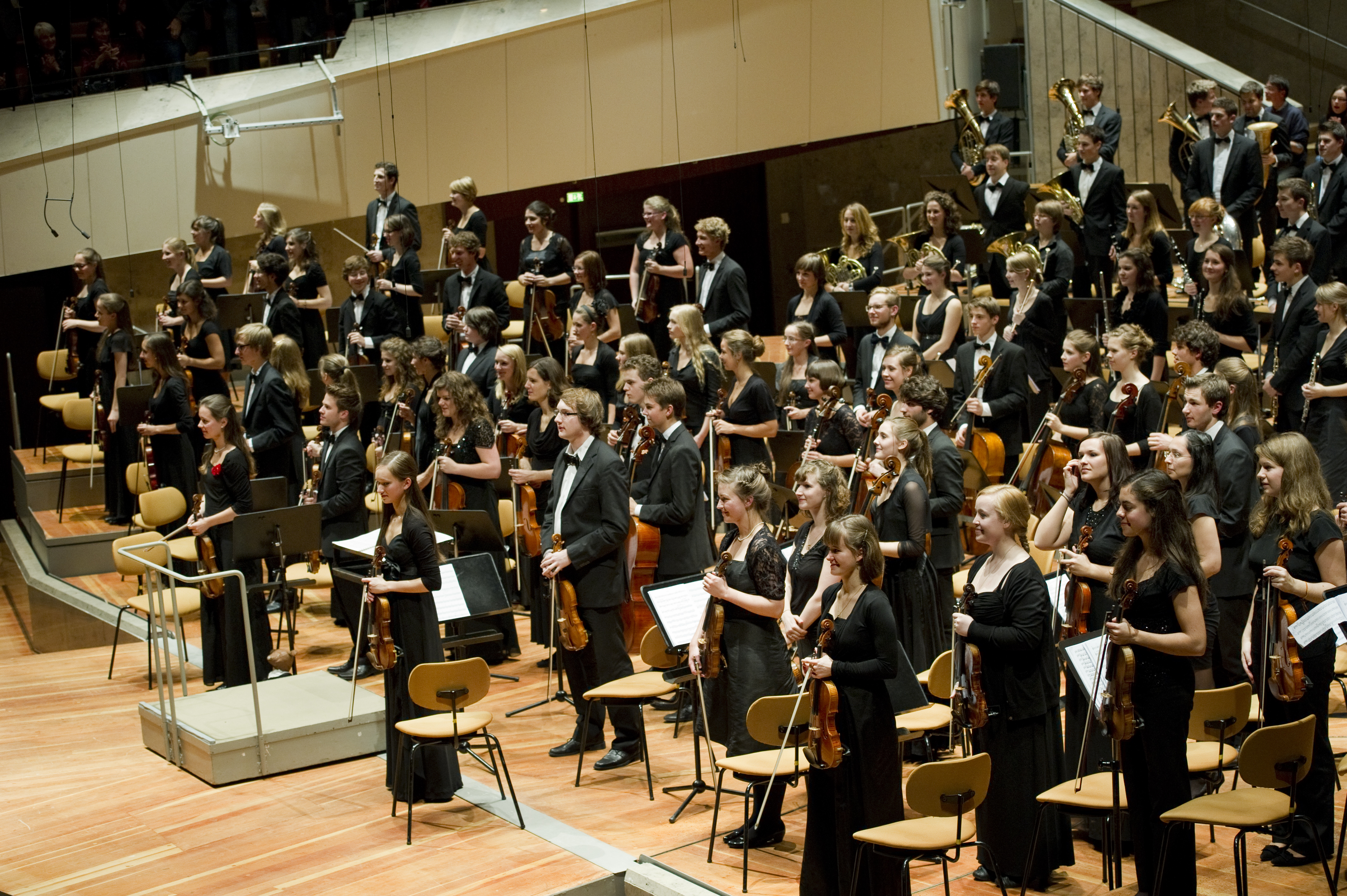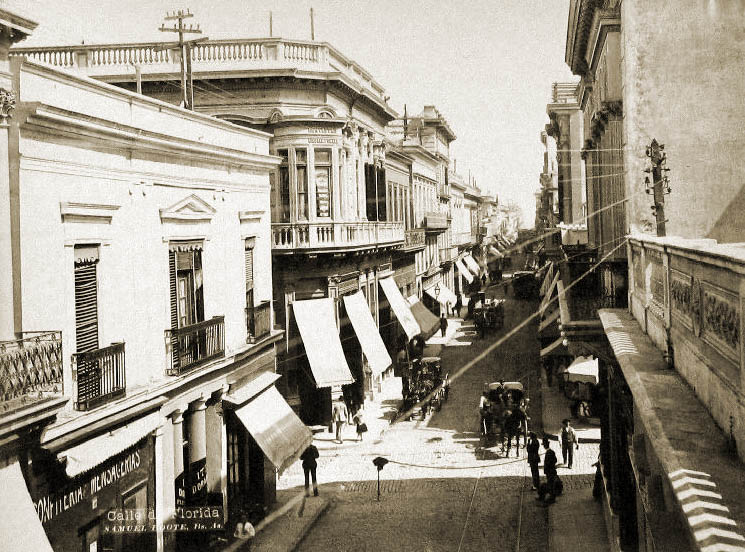|
Torcuato Di Tella Institute
The Torcuato di Tella Institute is a non-profit foundation organized for the promotion of Argentine culture. Overview 1959-1960 The Di Tella Foundation and its institute were created on July 22, 1958, the tenth anniversary of the death of industrialist and arts patron, Torcuato di Tella. Funding for the project, organized by his sons, Torcuato and Guido di Tella, was raised using the United States model of corporate financing, as well as by the donation of 10% of the SIAM Di Tella corporation's public stock. Its objective was initially limited to an arts program revolving primarily around the display of the Di Tella family's private collections, which prominently included works by Henry Moore, Pablo Picasso, Amedeo Modigliani, and Jackson Pollock. The board of the foundation consisted of family members, though the institute was directed by a board that included academics and intellectuals from outside the family. Guido Di Tella would serve as president, and the post of director o ... [...More Info...] [...Related Items...] OR: [Wikipedia] [Google] [Baidu] |
Non-profit Organization
A nonprofit organization (NPO), also known as a nonbusiness entity, nonprofit institution, not-for-profit organization, or simply a nonprofit, is a non-governmental (private) legal entity organized and operated for a collective, public, or social benefit, as opposed to an entity that operates as a business aiming to generate a Profit (accounting), profit for its owners. A nonprofit organization is subject to the non-distribution constraint: any revenues that exceed expenses must be committed to the organization's purpose, not taken by private parties. Depending on the local laws, charities are regularly organized as non-profits. A host of organizations may be non-profit, including some political organizations, schools, hospitals, business associations, churches, foundations, social clubs, and consumer cooperatives. Nonprofit entities may seek approval from governments to be Tax exemption, tax-exempt, and some may also qualify to receive tax-deductible contributions, but an enti ... [...More Info...] [...Related Items...] OR: [Wikipedia] [Google] [Baidu] |
Les Luthiers
Les Luthiers is an Argentine comedy-musical group, very popular also in several other Spanish language, Spanish-speaking countries including Paraguay, Guatemala, Peru, Chile, Ecuador, Spain, Colombia, Mexico, Uruguay, Bolivia, Cuba, Costa Rica and Venezuela. They were formed in 1967 by Gerardo Masana, during the height of a period of very intense choral, choral music activity in Argentina's state universities. Their outstanding characteristic is the custom made instrument, home-made musical instruments (hence the name ''luthiers'', French language, French for "musical instrument maker"), some of them extremely sophisticated, which they skillfully employ in their recitals to produce music and texts full of high class and refined humor. From 1977 until his death in 2007, they worked with Roberto Fontanarrosa, a renowned Argentine cartoonist and writer. Background The group emerged from members of the university classical choir I Musicisti. Initially a quartet (Masana, Maronna, Mun ... [...More Info...] [...Related Items...] OR: [Wikipedia] [Google] [Baidu] |
Electronic Music
Electronic music broadly is a group of music genres that employ electronic musical instruments, circuitry-based music technology and software, or general-purpose electronics (such as personal computers) in its creation. It includes both music made using electronic and electromechanical means (electroacoustic music). Pure electronic instruments depend entirely on circuitry-based sound generation, for instance using devices such as an electronic oscillator, theremin, or synthesizer: no acoustic waves need to be previously generated by mechanical means and then converted into electrical signals. On the other hand, electromechanical instruments have mechanical parts such as strings or hammers that generate the sound waves, together with electric elements including pickup (music technology), magnetic pickups, power amplifiers and loudspeakers that convert the acoustic waves into electrical signals, process them and convert them back into sound waves. Such electromechanical devices in ... [...More Info...] [...Related Items...] OR: [Wikipedia] [Google] [Baidu] |
Dodecaphonic
The twelve-tone technique—also known as dodecaphony, twelve-tone serialism, and (in British usage) twelve-note composition—is a method of musical composition. The technique is a means of ensuring that all 12 notes of the chromatic scale are sounded equally often in a piece of music while preventing the emphasis of any one notePerle 1977, 2. through the use of tone rows, orderings of the 12 pitch classes. All 12 notes are thus given more or less equal importance, and the music avoids being in a key. The technique was first devised by Austrian composer Josef Matthias Hauer, who published his "law of the twelve tones" in 1919. In 1923, Arnold Schoenberg (1874–1951) developed his own, better-known version of 12-tone technique, which became associated with the " Second Viennese School" composers, who were the primary users of the technique in the first decades of its existence. Over time, the technique increased greatly in popularity and eventually became widely influen ... [...More Info...] [...Related Items...] OR: [Wikipedia] [Google] [Baidu] |
Alberto Ginastera
Alberto Evaristo Ginastera (; April 11, 1916June 25, 1983) was an Argentine composer of classical music. He is considered to be one of the most important 20th-century classical music, 20th-century classical composers of the Americas. Biography Ginastera was born in Buenos Aires to a Spanish people, Spanish father and an Italian people, Italian mother. During his later years, he preferred to use the Catalan language, Catalan and Italian pronunciation of his surname – , with an initial soft 'G' like that of English 'George' – rather than with a Spanish language, Spanish 'J' sound (). Ginastera studied at the Williams Conservatory (Buenos Aires), Williams Conservatory in Buenos Aires, graduating in 1938. As a young professor, he taught at the Liceo Militar General San Martín. After a visit to the United States in 1945–47, where he studied with Aaron Copland at Tanglewood, he returned to Buenos Aires. He held a number of teaching posts. Among his notable students were Ástor P ... [...More Info...] [...Related Items...] OR: [Wikipedia] [Google] [Baidu] |
Classical Music
Classical music generally refers to the art music of the Western world, considered to be #Relationship to other music traditions, distinct from Western folk music or popular music traditions. It is sometimes distinguished as Western classical music, as the term "classical music" can also be applied to List of classical and art music traditions, non-Western art musics. Classical music is often characterized by formality and complexity in its musical form and Harmony, harmonic organization, particularly with the use of polyphony. Since at least the ninth century, it has been primarily a written tradition, spawning a sophisticated music notation, notational system, as well as accompanying literature in music analysis, analytical, music criticism, critical, Music history, historiographical, musicology, musicological and Philosophy of music, philosophical practices. A foundational component of Western culture, classical music is frequently seen from the perspective of individual or com ... [...More Info...] [...Related Items...] OR: [Wikipedia] [Google] [Baidu] |
Retiro, Buenos Aires
Retiro is a ''barrio'' or neighborhood in Buenos Aires, Argentina. Located in the northeast end of the city, Retiro is bordered on the south by the Puerto Madero and San Nicolás, Buenos Aires, San Nicolás, and on the west by the Recoleta, Buenos Aires, Recoleta. History Towards the end of the 17th century and the beginning of the 18th was installed in the area, an asiento of slaves belonging to the :fr:Compagnie de Guinée, Compagnie de Guinée and South Sea Company, that operated until 1739. In 1800 began the construction of Plaza de Toros del Retiro, a stadium of bullfighting built by the architect Francisco Cañete, that worked until 1819. In the Plaza de Toros took place the battles between the troops of Santiago de Liniers and the British army, occurred during the British invasions of the River Plate, English invasions of 1806 and 1807. In 1821 was installed the first dissident cemetery of Buenos Aires, located in the vicinity of Iglesia Nuestra Señora del Socorro (Retiro ... [...More Info...] [...Related Items...] OR: [Wikipedia] [Google] [Baidu] |
Plaza San Martín (Buenos Aires)
Plaza San Martín (English language, English: ''San Martín Square'') is a park located in the Retiro, Buenos Aires, Retiro neighbourhood of Buenos Aires, Argentina. Situated at the northern end of pedestrianized Florida Street, the park is bounded by Avenida del Libertador (Buenos Aires), Libertador Ave. (N), Maipú St. (W), Santa Fe Avenue (S), and Leandro Alem Av. (E). Its coordinates are . History A succession of colonial Spanish Empire, Spanish governors had their official residences built on what today is the plaza and, in 1713, the land was sold to the British Empire, British South Sea Company. The South Sea Company operated their History of slavery, slave trade out of the former governor's residence and a fort and bullring were later built nearby. The land was the site of Gen. John Whitelocke's 1807 defeat upon Britain's British invasions of the Río de la Plata, second attempt to conquer Buenos Aires, whereby the area became known as the "Field of Glory". The May Revolu ... [...More Info...] [...Related Items...] OR: [Wikipedia] [Google] [Baidu] |
Florida Street
Florida Street () is a popular shopping street in Buenos Aires CBD, Downtown Buenos Aires, Argentina. A pedestrian street since 1971, some stretches have been pedestrianized since 1913. The Walkability, pedestrian section as such starts at the intersection of Perú Street and Avenida de Mayo, a block north of the Plaza de Mayo; Perú Street crosses Rivadavia Avenue, and becomes Florida Street. Florida Street runs northwards for approximately one kilometer to Plaza San Martín (Buenos Aires), Plaza San Martín, in the Retiro, Buenos Aires, Retiro area. It intersects Buenos Aires's other pedestrian street, Lavalle, at the heart of the former cinema district. Florida is one of the city's leading tourism in Buenos Aires, tourist attractions. Florida Street bustles with shoppers, vendors, and office workers alike because of its proximity to the San Nicolás, Buenos Aires, financial district. By evening, the pace relaxes as street performers flock to the area, including Tango music, ta ... [...More Info...] [...Related Items...] OR: [Wikipedia] [Google] [Baidu] |
La Menesunda
''La Menesunda'' (Lunfardo for "mayhem") is an installation art work by Argentine artists Marta Minujín and Rubén Santantonín, made in collaboration with Pablo Suárez, David Lamelas, Rodolfo Prayón, Floreal Amor and Leopoldo Maler. It was presented on May 27, 1965, at the Torcuato di Tella Institute in Buenos Aires. The work, alongside that of Niki de Saint Phalle, Christo and Claes Oldenburg, counts among the earliest large-scale environments or installations in art history. ''La Menesunda'' revolutionized Buenos Aires, attracting a large number of visitors and several news reports, and is now considered one of the greatest milestones in the history of Argentine art. ''La Menesunda'' was recreated for the first time in 2015 and exhibited at the Buenos Aires Museum of Modern Art. Since then, the installation was also recreated in June 2019 in New York City's New Museum (its first-ever presentation in the United States), and was due to be exhibited October 2020 at Tate Liverp ... [...More Info...] [...Related Items...] OR: [Wikipedia] [Google] [Baidu] |
La Rioja Province (Argentina)
La Rioja (), officially Province of La Rioja is a province of Argentina located in the west of the country. The landscape of the province consists of a series of arid to semi-arid mountain ranges and agricultural valleys in between. It is in one of these valleys that the capital of the province, the city of La Rioja, lies. Neighboring provinces are, from the north clockwise, Catamarca, Córdoba, San Luis and San Juan. The Triassic sauropodomorph dinosaur '' Riojasaurus'' is named after the province. History Petroglyphs created by early indigenous peoples at the Talampaya National Park are dated around 10,000 years BC. Succeeding cultures of indigenous peoples developed here. The Diaguita, Capayan and the Olongasta peoples inhabited the territory of present-day La Rioja Province at the time of encounter with the Spanish colonists in the 16th century. Juan Ramírez de Velazco founded ''Todos Los Santos de la Nueva Rioja'' in 1591 under the government of Tucumán of the ... [...More Info...] [...Related Items...] OR: [Wikipedia] [Google] [Baidu] |
Latin American Art
Latin American art is the combined artistic expression of Mexico, Central America, the Caribbean, and South America, as well as Latin Americans living in other regions. The art has roots in the many different Indigenous peoples of the Americas, indigenous cultures that inhabited the Americas before European colonization in the 16th century. The indigenous cultures each developed sophisticated artistic disciplines, which were highly influenced by religious and spiritual concerns. Their work is collectively known and referred to as Pre-Columbian art. The blending of Amerindian, European and African cultures has resulted in a unique Mestizo tradition. Colonial period During the colonial period, a mixture of indigenous peoples of the Americas, indigenous traditions and European influences (mainly due to the Christian teachings of Franciscan, Augustinians, Augustinian and Dominican Order, Dominican friars) produced a very particular Christian art known as Indochristian art. In additi ... [...More Info...] [...Related Items...] OR: [Wikipedia] [Google] [Baidu] |






